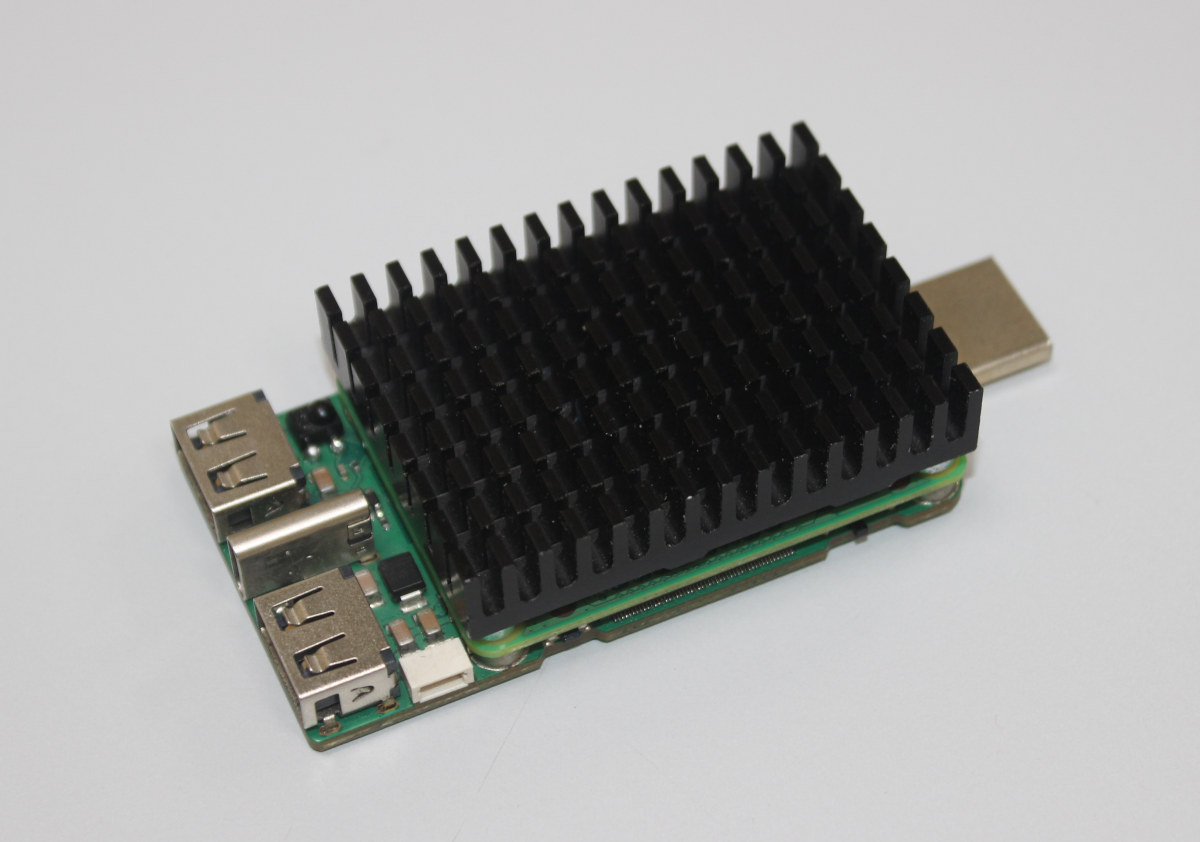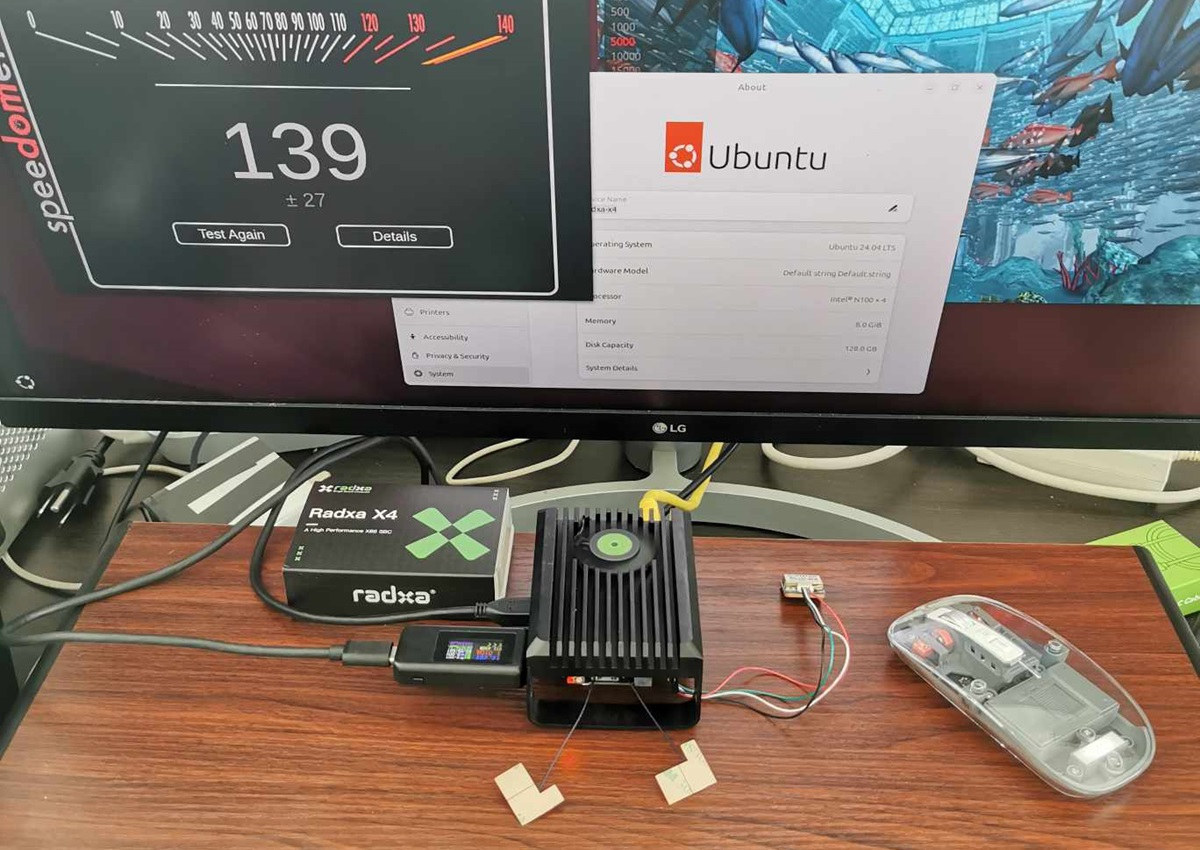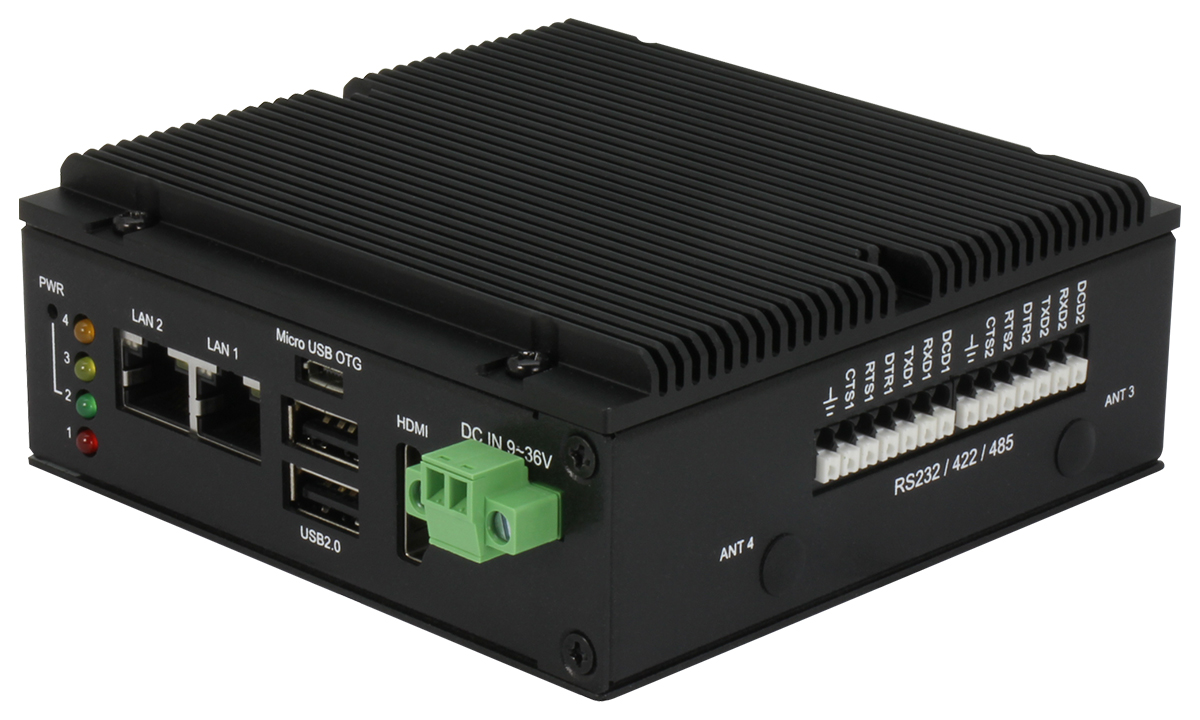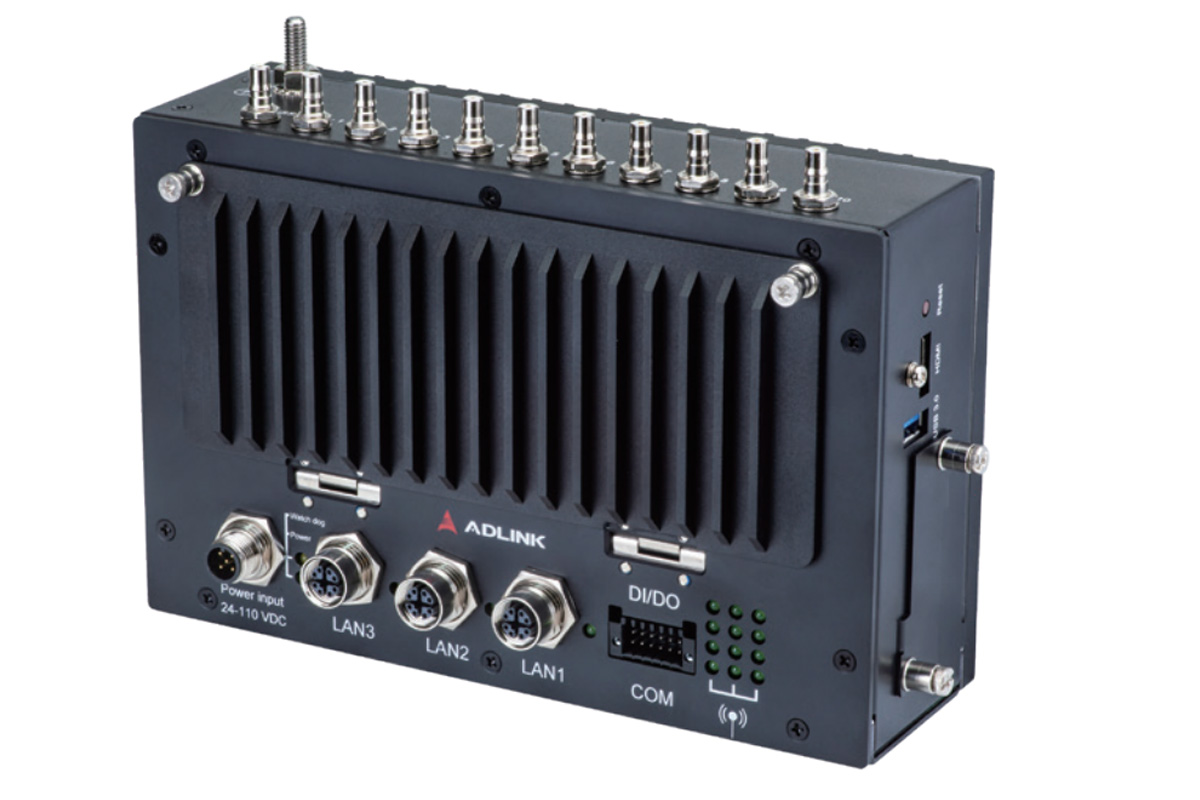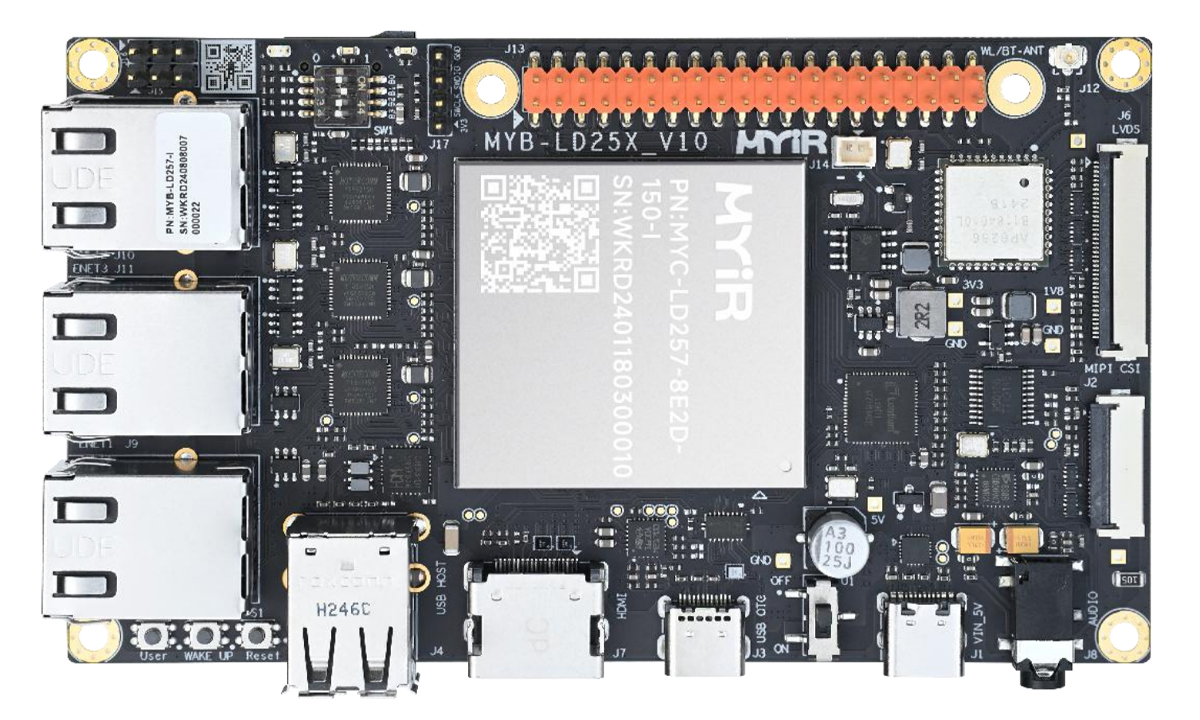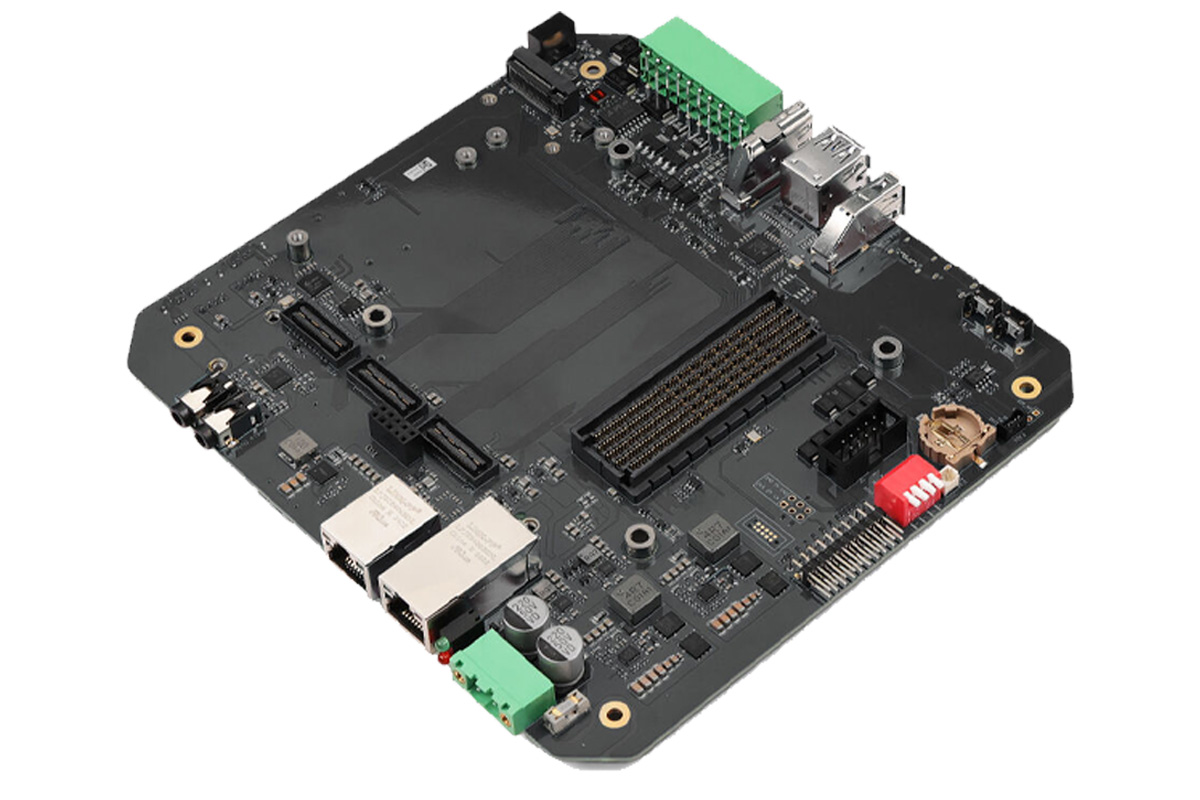Jetway JPIC-ADN1 is a fanless pico-ITX SBC powered by an Intel N97 or N200 Alder Lake-N processor and targeted at industrial robotics applications. The JPIC-ADN1 supports up to 32GB of memory via a single-channel SO-DIMM slot. The SoC comes with UHD Graphics, supporting dual-display outputs via HDMI 2.0b and a 24-bit dual-channel LVDS interface. For storage, it features an M.2 B+M-Key socket and a SATA 3 port, plus an E-Key 2230 socket for wireless expansion. Gigabit Ethernet networking is handled by the RTL8111H GbE controller. Additionally, it has a serial header, 8-bit GPIO, SMBUS, watchdog timer, and much more. JPIC-ADN1 fanless SBC specification Alder Lake-N SoC (one or the other) Intel Processor N97 quad-core Alder Lake N-series processor with Intel UHD graphics; 12W TDP Intel Processor N200 quad-core processor @ up to 3.7 GHz (Turbo) with 6MB cache, 32EU Intel HD graphics @ up to 750 MHz; TDP: 6W Additional compatible CPUs available via regional sales […]
DigiPort is an HDMI computer dongle powered by a Raspberry Pi CM4 (Crowdfunding)
Shivam Goyal, going under the Geeky Tronics name, has developed the DigiPort HDMI computer dongle powered by a Raspberry Pi CM4 system-on-module and designed to be connected directly to the back of an HDMI or through an HDMI cable. Since it does not support MHL, the DigiPort also needs a USB-C power source. You can add a keyboard and a mouse through its two USB 2.0 ports or via Bluetooth and network connectivity is managed through WiFi 5 making it a portable computer ready to use out of the box. DigiPort specifications: Supported System-on-Module – Raspberry Pi CM4 SoC – Broadcom BCM2711 quad-core Cortex-A72 processor @ 1.5 GHz System Memory – 1GB to 8GB LPDDR4-3200 SDRAM Storage – 0GB (CM4 Lite), or 8GB to 32GB eMMC flash Wireless – Dual-band WiFi 5 and Bluetooth 5.0 Storage – MicroSD card for OS when using a CM4 Lite module Video Output – […]
Congatec conga-TCR8 AMD Ryzen Embedded 8000 COM Express computer-on-module series delivers up to 39 TOPS of AI performance
Congatec has released a new line of Ryzen Embedded 8000-powered COM Express Type 6 Compact computer-on-modules with the conga-TCR8 module series offering up to 39 tera operations per second (TOPS) for AI inference and 128GB of DDR5-5600 memory with error correction code (ECC) for data-sensitive and data-critical applications. The Ryzen Embedded 8000 processor series comes with either six or eight ‘Zen 4’ cores, an integrated XDNA neural processing unit (16 TOPS), and the AMD Radeon RDNA 3 graphics unit which can be used as a general-purpose graphics processing unit with up to 12 compute units (adding up to 39 TOPS for the SoC). Graphics output is supported by four displays with up to 8K resolution, and peripheral options include six PCIe Gen 4 slots, four USB 3.2 Gen 2 ports, four USB 2.0 ports, and three DisplayPort interfaces. The conga-TCR8 Type 6 modules are intended for high-volume applications that require […]
Radxa X4 review – An Intel N100 alternative to Raspberry Pi 5 tested with Ubuntu 24.04
We already looked at the Radxa X4 kit featuring an Intel N100 SBC with a design similar to the Raspberry Pi 5 and accessories including a Radxa Power PD 30W power adapter, an NVMe SSD, and a USB-C to USB-C cable, in the first part of the review, before installing Ubuntu 24.04 on the board.
In the second part of the review, we will test Ubuntu 24.04 in more detail with some benchmarks and power consumption measurements to show how well it works (or not) compared to a Raspberry Pi 5. We will also test the 40-pin GPIO header on the Radxa X4 controlled through a Raspberry Pi RP2040 microcontroller.
AAEON SRG-CM4 IoT gateway features Raspberry Pi CM4 SoM for industrial applications
AAEON SRG-CM4 is an IoT gateway based on the Raspberry Pi Compute Module 4 (CM4) with 1GB to 8GB of RAM and 8GB to 32GB of eMMC storage, all powered by the Broadcom BCM2711 quad-core Cortex-A72 SoC. The gateway features a modular chassis, maintaining the compact size and industrial-grade features typical of AAEON’s edge gateway products, making it ideal for various embedded applications. In terms of connectivity, the SRG-CM4 offers two switchable serial ports supporting RS-232/422/485, with an optional isolated RS-485 port, CAN 2.0 A/B, and two isolated DI/DO. Additional interfaces include two Gigabit Ethernet RJ45 ports, two USB 2.0 ports, and an HDMI 1.4 video output. The device operates within a wide temperature range of -20°C to 70°C and supports a DC 9V to 36V power input, ensuring reliability in industrial environments. We previously covered the reComputer R1025-10, a Raspberry Pi CM4-based DIN Rail industrial gateway with optional wireless […]
ADLINK AVA-1000 is a rugged EN50155-compliant T2G gateway for railway and industrial applications
The ADLINK AVA-1000 T2G gateway is a rugged, EN50155-compliant T2G (Train-to-Ground) gateway designed for railway and industrial environments. Powered by a choice of NXP i.MX8M Plus Quad Cortex-A53 processor or an Intel Processor N50 Alder Lake-N processor. The i.MX8M Plus model is equipped with up to 8GB LPDDR4 and a 64GB eMMC flash whereas the Alder Lake variant features up to 4GB LPDDR5 memory and a 32GB eMMC flash. In terms of connectivity, the gateway features three M12 GbE ports and supports a wide range of options including 5G, WiFi 6, and GNSS. The AVA-1000 T2G gateway’s fanless design, wide operating temperature range, and 24-110V DC input ensure reliable operation in industrial environments. Additionally, its compliance with EN50155 and other industrial standards makes it ideal for various industrial applications. AVA-1000 T2G gateway specifications System Processor (multiple options) NXP i.MX8M Plus quad-core Cortex-A53 processor @ up to 1.8 GHz with Cortex-M7 […]
MYiR Tech MYC-LD25X – A compact STM32MP25 system-on-module running Debian 12
MYiR Tech’s MYC-LD25X is a compact 39x37mm system-on-module built around the STMicro STM32MP25 dual-core Cortex-A35 SoC running at 1.5GHz with a Cortex-M33 core, and an NPU capable of 1.35 TOPS. The module comes with up to 2GB LPDDR4 RAM, 8GB eMMC storage, and a range of connectivity options, including Gigabit Ethernet, USB, CAN FD, UART, and SPI. Designed for industrial HMI, edge computing, energy systems, and automation, the MYC-LD25X is suitable for high-performance applications in these fields. Previously, we covered other development boards from MYiR, including the MYD-J7A100T, MYD-YG2UL, MYD-YG2LX, and MYD-J1028X. We also wrote about other STM32MP25-based system-in-package and system-on-module namely the Digi ConnectCore MP25 and Octavo OSD32MP2. Feel free to check them out if you’re interested. MYC-LD25X STM32MP25-based System-On-Module MYC-LD25X specifications: SoC – STMicro STM32MP257D processor CPU – Dual-core Arm Cortex-A35 64-bit RISC core operating at up to 1.5 GHz MPU – 32-bit Arm Cortex-M33 RISC core clocked at […]
reServer Industrial J501 – An NVIDIA Jetson AGX Orin carrier board with 10GbE, 8K video output, GMSL camera support
Seeed Studio’s reServer Industrial J501, a Jetson AGX Orin carrier board designed for building Edge AI systems. With up to 275 TOPS of exceptional AI performance, this carrier board is designed for advanced robotics and edge AI applications for industrial environments. The carrier board features GbE and 10GbE LAN via RJ45 ports, three USB 3.1 ports, an HDMI 2.1 output, and multiple M.2 slots for expansion, including support for wireless connectivity via the M.2 Key B socket. Additionally, it has support for 8K video decoding and up to 8 GMSL cameras via an optional extension board. reServer Industrial J501 Jetson AGX Orin carrier board specification System-on-Module (one or the other) SoM – NVIDIA Jetson AGX Orin 64GB with CPU – 12-core Arm Cortex-A78AE v8.2 64-bit processor with 3MB L2 + 6MB L3 cache GPU / AI accelerators NVIDIA Ampere architecture with 2048 NVIDIA CUDA cores and 64 Tensor Cores @ […]



